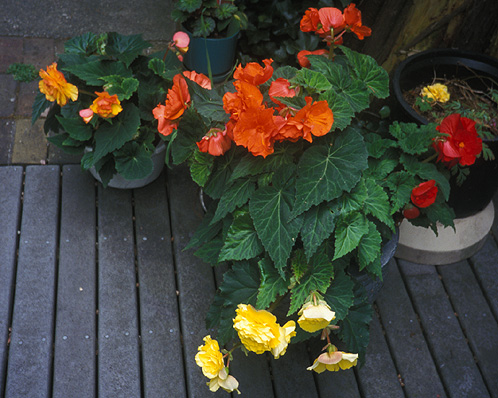
|
| Plants for Children |
| Children especially prize certain plants. Some are neat to look at, others fun to play with; some smell wonderful, a few taste like candy. There are enough such plants that a whole book could be written about them, and a large garden filled with them. Below are listed just a few that taste or smell great. If you know any of these plants, introduce the children in your life to them. You may end up delighting or inspiring someone. Every daycare facility should get a few of these, at least in pots. The kids can help grow the plants --if they don't eat 'em alive. |
| Candy mint (Mentha piperita clone). The essential oil of this mint is used to flavor candy canes. The leaves are dark green, on purplish, square stems, the flowers pinkish. Its root system creeps along just under ground, sending up leafy stems a foot or two tall. |
| Johnny Jump-Up (Viola tricolor). Also called wild pansies, these are irresistibly cute, baby-sized pansy flowers, in a rainbow of colors (including black), tasting like candy. What's more, ants carry the seeds around, so plants "jump up" in various places from year to year. |
| Sweet Cicely (Myrrhis odorata) bears soft, ferny foliage, petite white flowers, then shiny black seeds an inch long. Before the seeds harden, they are tender green pieces of licorice candy. Sweet Cicely grows fine in shade, and is a perennial. Unfortunately, the entire season of its seed availability is short, less than two months. |
| Caraway Thyme (Thymus Herba-barona). Candy scented, smelling like what I would imagine a love potion might be. Perfect for rockeries, it hops about as a loose, low groundcover, bearing pink flowers in June, against a backdrop of tiny, glossy, intensely dark leaves. It is better to caress and sniff than to eat, but is edible. |
| Sweet Leaf (Lippia dulcis). This "Aztec Sweet Herb" from central America packs potent sugary sweetness in its leaves. It is amazing. Winter kills it, but all summer and fall the kids (and you) can enjoy nibbling it. Somewhat rare, it can be obtained from nurseries stocking wide selections of culinary herbs. |
| Mulberries (Morus spp. ). Sort of like blackberries in appearance, but growing on trees or bushes. Some are white, others pink, lavender, reddish, purple or pure black. They often make indelible stains, so watch what the tots are wearing. The best one for kids is the fruitful weeping mulberry, Morus alba 'Pendula'. Its berries stay within picking height, and are ripe from late June into September. |
| Wintergreen (Gaultheria procumbens). In spring the young leaves are coppery-red, tender, glossy, and taste like wintergreen (as in some chewing gums, Pepto Bismol®, etc.). In winter the little red berries can be eaten, with identical flavor. It is an evergreen low groundcover, liking rich soil. |
| Begonia (Begonia spp. ). The flowers, in a riot of colors depending on the variety, are tangy delicacies well worth munching. Only eat from unsprayed plants. Another first-rate edible flower is nasturtium (Tropæolum spp.), with distinctive round leaves and hot peppery flavor. |
There are many more --medlars, dog roses, Himalayan honeysuckles, lemon thyme, sheep sorrel, peppermint geranium, etc. In these days of computers, big-screen TV, and other visual and abstract engagements, it seems necessary to encourage hands-on interaction with nature as a means of maintaining a balanced approach. It is beneficial to taste, sniff, and touch plants.
(originally published in The Seattle Weekly, June 1997)
Back |
|
|

